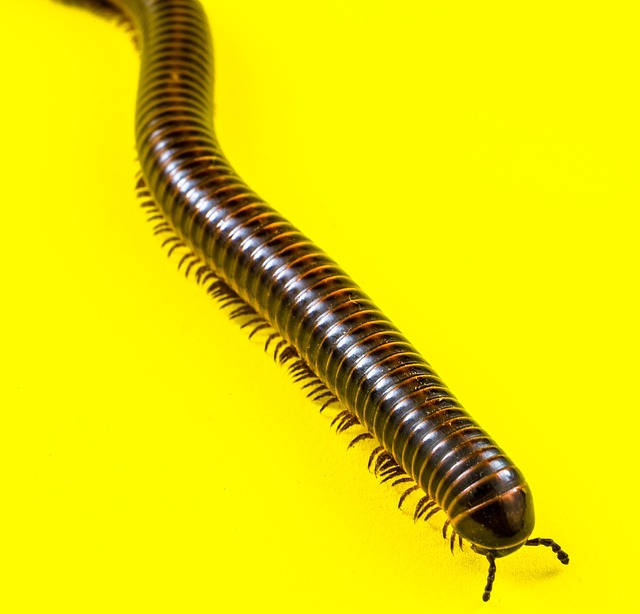Centipedes, nocturnal creatures attracted to dark, damp spaces, infiltrate homes through tiny cracks and crevices. To combat this, professional centipede treatment services emphasize strategic inspections and targeted control measures. They recommend sealing entry points like gaps around pipes and doors, using specialized lighting for detection, and creating personalized plans combining insecticide applications and preventative measures. By understanding post-inspection actions and adopting multi-faceted approaches including regular cleaning, decluttering, and IPM strategies, homeowners can prevent future centipede infestations, leveraging centipede treatment services for effective, efficient solutions.
Centipedes, though small, can cause big problems for homeowners. Understanding their behavior and identifying entry points is crucial in effective centipede control. Expert inspections play a vital role in this process, offering specialized knowledge to pinpoint these elusive intruders. This article guides you through the ins and outs of centipede management, from recognizing behavioral patterns and entry points to exploring comprehensive centipede treatment services and preventive measures after an inspection.
Understanding Centipede Behavior and Entry Points
Centipedes are nocturnal creatures that prefer dark, damp spaces, making them hard to spot during the day. They enter homes through tiny cracks and crevices, often seeking moisture and organic matter to sustain their diet of insects and other small animals. Understanding this behavior is crucial for identifying potential entry points.
Professional centipede treatment services recommend conducting thorough inspections at night or using specialized lighting to detect these elusive invaders. Common entry points include gaps around pipes, wires, doors, and windows, as well as cracks in foundations and walls. By locating these points, homeowners can seal them with caulk or other appropriate materials to prevent centipedes from establishing a presence inside their homes.
The Role of Expert Inspections in Centipede Control
Expert inspections play a pivotal role in centipede control, offering a strategic approach to managing these persistent pests. Professional inspectors are trained to identify subtle signs of centipede activity, often hidden from untrained eyes. They meticulously examine exterior areas, focusing on entry points such as cracks, gaps, and crevices, where centipedes tend to infiltrate homes and buildings.
By conducting thorough inspections, these experts can pinpoint specific areas requiring centipede treatment services. This targeted approach ensures that control measures are applied effectively, minimizing the use of chemicals and maximizing cost-efficiency. Moreover, regular inspections help in early detection of infestations, making it easier to implement preventive measures and reduce the need for extensive centipede treatment later.
Comprehensive Centipede Treatment Services: What to Expect
When it comes to centipede treatment services, a comprehensive approach is key. Professional inspectors will start by performing a thorough inspection of your property, identifying all potential entry points and habitats where centipedes may be lurking. This involves meticulously searching for signs of an existing infestation, such as live centipedes, egg sacs, or silken tunnels, which can be hard to spot due to their elusive nature.
Next, the experts will develop a tailored treatment plan. This often includes a combination of methods like sealing entry points with special materials, applying targeted insecticides, and implementing preventive measures to deter centipedes from returning. They may also offer advice on making your home less attractive to these creatures by addressing any moisture issues or removing potential hiding spots, ensuring a long-lasting solution for centipede control.
Preventing Centipede Infestations: Post-Inspection Steps
After an expert inspection, understanding post-inspection steps is crucial in preventing future centipede infestations. Centipede treatment services often recommend a multi-pronged approach that combines targeted treatments and environmental adjustments. This includes sealing entry points identified during the inspection to disrupt centipede pathways into your space. Regular cleaning and decluttering, especially in areas with moisture issues or organic debris, can significantly reduce their appeal as living spaces.
Additionally, maintaining a strong physical barrier using weatherstripping, caulk, or mesh screens around windows, doors, and other potential entry points acts as a robust defense mechanism. Centipede treatment services may also suggest the implementation of integrated pest management (IPM) strategies to deter these pests naturally, such as introducing beneficial insects that feed on centipedes or utilizing plant-based repellents.
Expert inspections are key to effective centipede control, identifying entry points and guiding tailored centipede treatment services. By understanding centipede behavior and leveraging professional knowledge, you can prevent and mitigate infestations with precision. After an inspection, take proactive steps to seal entry points and maintain a centipede-free environment, ensuring a peaceful and pest-free space.
